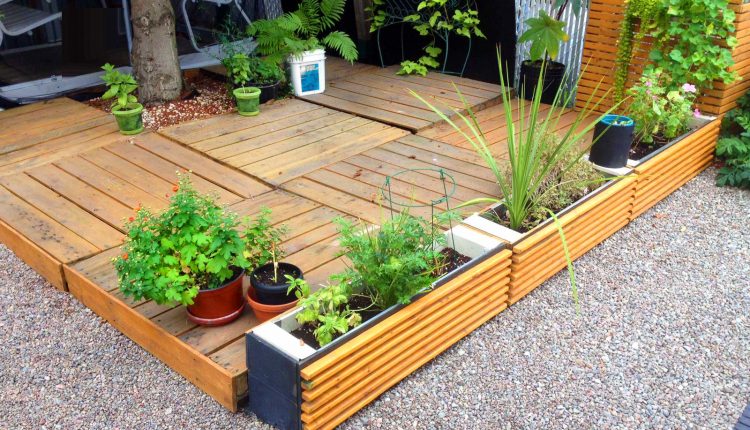Simple and Easy Landscaping Ideas
One of the biggest concerns that most families face when deciding how to design their existing landscape is “where do I start?”
If you aren’t a creative person or can’t afford a professional consultant to develop your landscaping plans, what do you do? Most people are looking for a few simple and easy landscaping ideas that they can follow and do the work themselves. I have had several friends and neighbours ask me for my advice and guidance so they can get started with their landscaping plans.
One of the first thoughts is to spend some time evaluating your current piece of property with particular emphasis on what do you want your completed landscaping project to look like.
Don’t try to copy your neighbour’s design
For example, they don’t have any children, and you do. They don’t need a play area, and you do. Therefore, it is essential to know what you are starting with, such as the existing layout and the primary features of your current yard. Does your lawn take up most of the property? What type of trees and where are they located on the property? Is the property level and easy to work with, or are you faced with gullies and rocky soil? Once you determine the pros and cons of what you starting with, then you can sketch out a rough design and come up with a feasible budget.
Now that you have an understanding of your terrain and landscape your need to whether to include a vegetable garden within the overall landscaping plan. A vegetable garden is not as aesthetic as a flower garden; however, sometimes it is easier to landscape. If you are only planting a flower garden, then you will want to keep the plants and flowers with a particular colour scheme such as a combination of vivid yellows and reds. Although selecting plant colours is a personal decision, blending specific colours will give you a more beautiful and coordinated appearance.
Don’t overlook the importance of the need for direct sunlight for your plants. Some flowers require direct sunlight whereby other plants need a certain amount of shade. Determine the amount of shade a specific area of the yard receives, and if it is in direct sunlight, how to create shade for flowers and vegetables that grow the best in indirect sunlight. You can do this by planting them in the shadow of individual larger plants, shrubs or trees. One of the easiest ways to create artificial shade is to grow vines on a trellis or fence.
You will now decide on how many and what types of trees to include in your landscape design. A single tree or a small group of trees can be a lovely arrangement within the lawn or an attractive side feature, or you may decide to place or keep them in the background. Do not choose an overpowering tree. Select one with an excellent shape with an interesting feature about its colourful leaves, distinctive bark, or colourful flowers.
Brilliant foliage of the sugar maple
You may want to consider the blossoms of the tulip tree, the bright berries of the ash, the bark of the white birch, the leaves of the copper beech or the brilliant foliage of the sugar maple. If you have a low area that stays wet most of the time, the willow or birch are ideal trees for this spot. Do not plant a group of evergreen trees next to the house; this generally gives a dark and gloomy effect to the house.
There are a variety of shrubs that can be used as hedges and are more pleasing in a landscape design than building expensive fences. The following shrubs make very lovely and colourful hedges: California privet, Japan barberry, Van Houtte’s spirea and the Osage orange. When choosing your trees and shrubs, select those of your local geographical area since they will be better suited for the climate and soil conditions.
Your house or tool shed often needs the help of vines or certain types of flowers to tie it together to create a harmonious landscape. Landscape architects use vines to accomplish this purpose. Plant a perennial vine, and it will develop into a permanent part of your landscape design. There are several alternatives that you can choose from such as Virginia creeper, clematis, honeysuckle, wisteria or trumpet vine.
Walkways and pathways are essential
Walkways and pathways are essential for all landscaping designs since they allow you as well as your guests, to walk through the garden without harming the plants and flowers. A variety of materials are used to create walkways such as gravel, pavers, brick or bark. Depending upon your style of garden, try to design your paths to curve and meander throughout your garden rather than in a straight line. Keep in mind; the path should lead somewhere; for example, starting from your back porch or deck and ending at your tool shed or property line.
When developing your landscaping plan, give some serious thought to the amount of time and effort you want to devote to working in your garden. If you have both a flower garden and a vegetable garden, then the amount of time to maintain and care for your plants will be considerable. You may want to install an irrigation system to eliminate the need to water the garden manually. This will save you time as well as improve the vitality of the plants. Weeding is tedious work and can be back-breaking at times. If you prefer to spend time on the beach or golf course, then you may want to give considerable thought to creating an easy-care landscape design.
Before you start your home landscaping project, you will need to check with local government officials where any gas lines, electrical lines and water pipes that may be running through your yard. You cannot afford to hit any of these things. It can be dangerous as well as expensive to repair.

